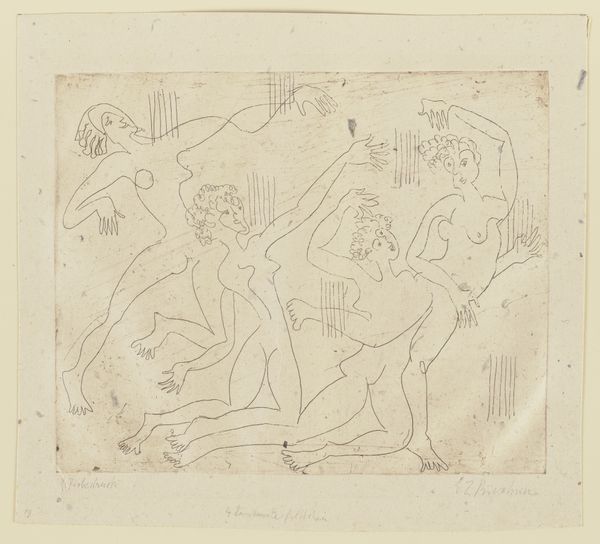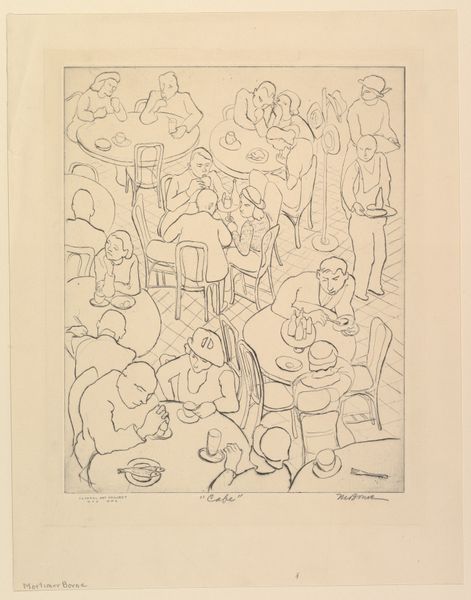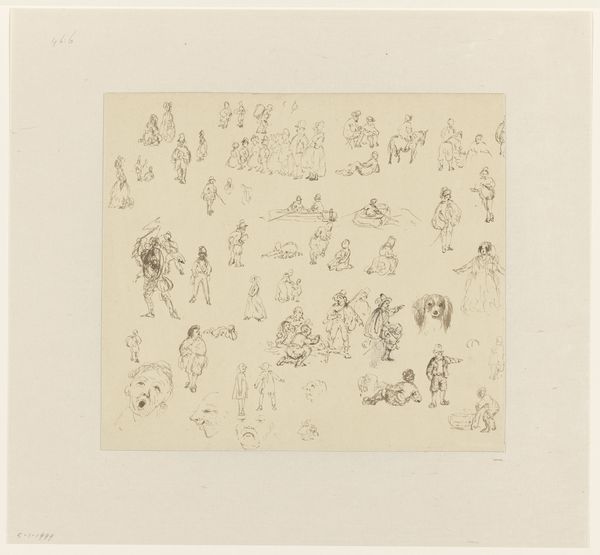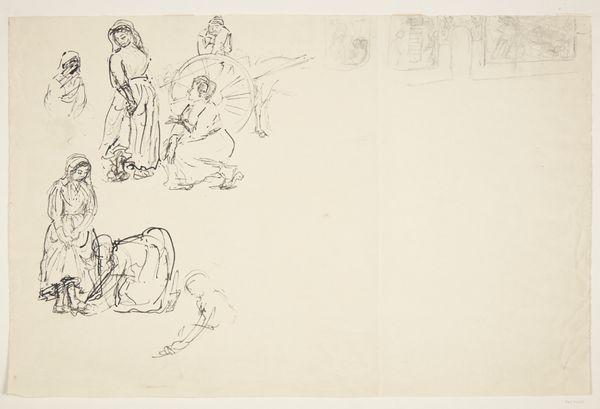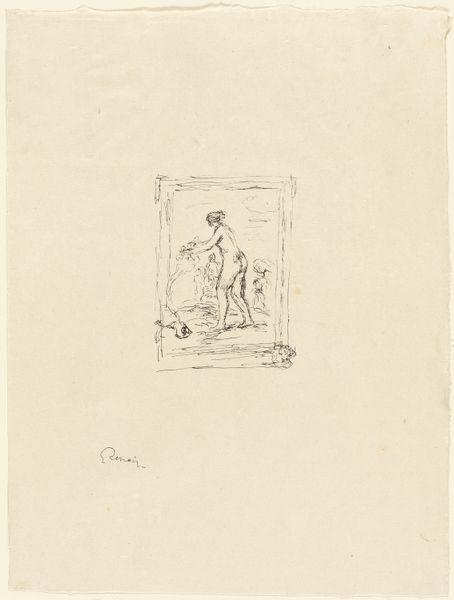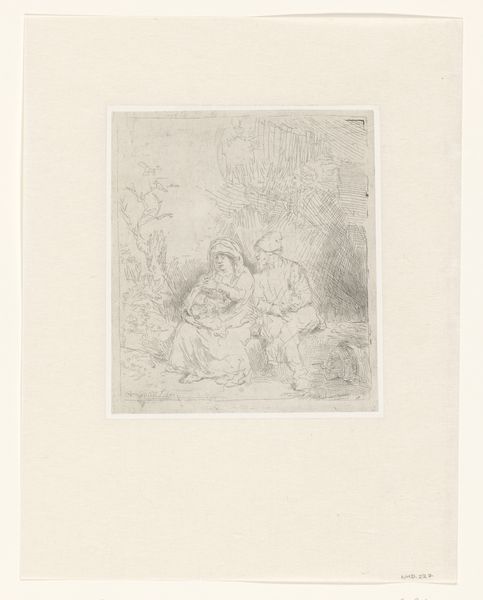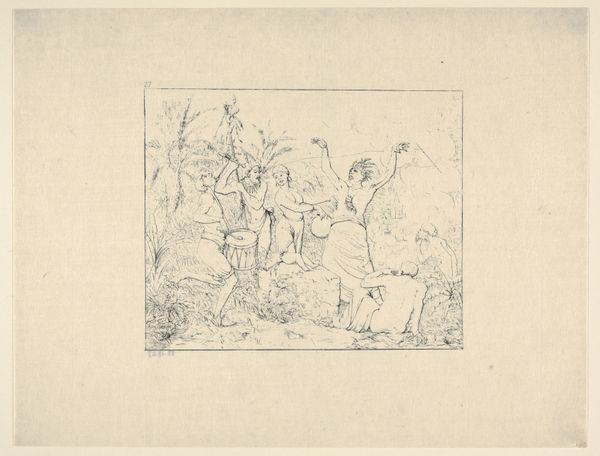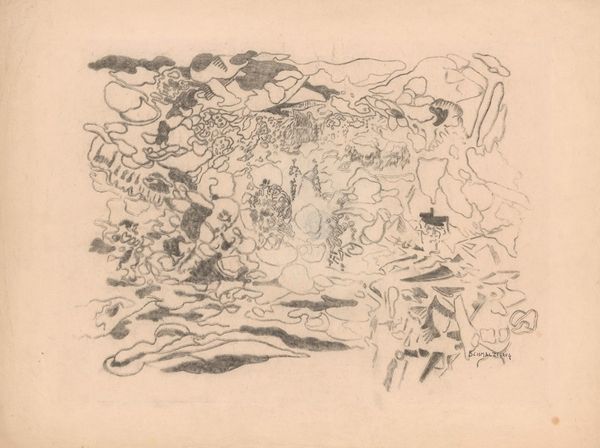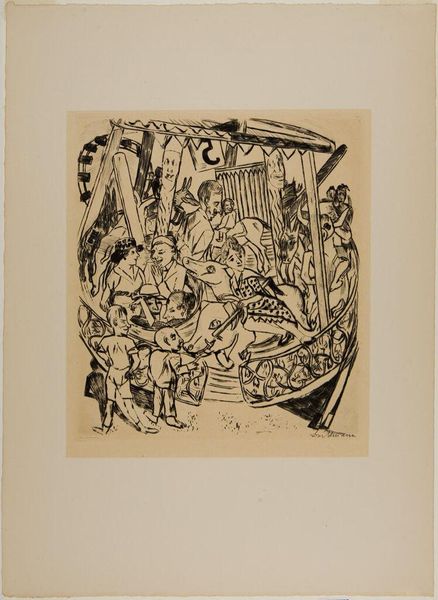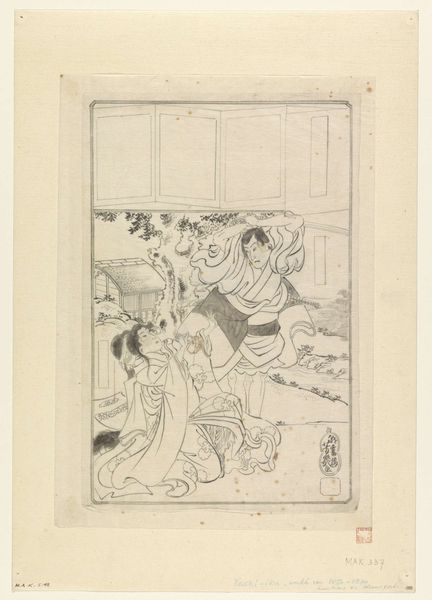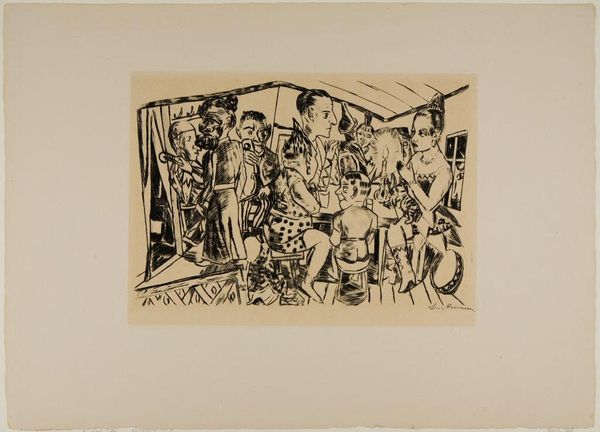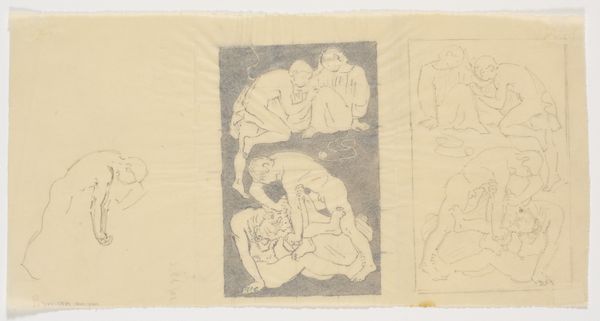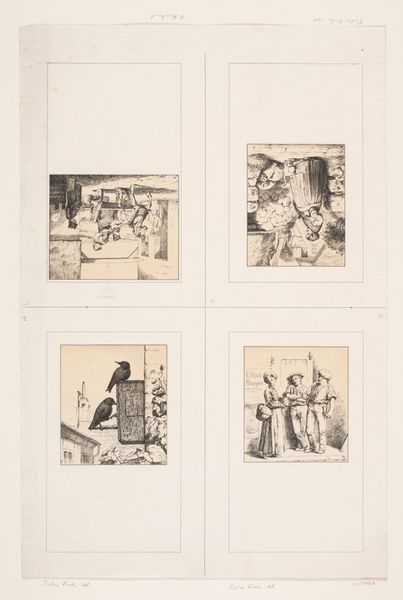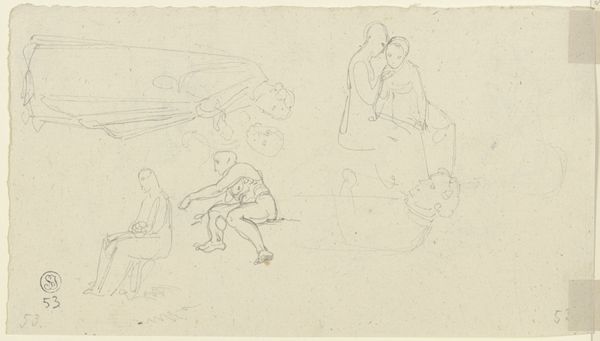
drawing, paper, ink
#
drawing
#
asian-art
#
landscape
#
ukiyo-e
#
figuration
#
paper
#
ink
#
line
Dimensions: height 168 mm, width 240 mm
Copyright: Rijks Museum: Open Domain
Curator: What a delightful, energetic scene! Hokusai's "Shishi-schetsen," created between 1770 and 1849, offers us a glimpse into a bustling world rendered with minimal yet expressive lines. It's currently held here at the Rijksmuseum. Editor: Immediately, the spontaneity of the ink sketches grabs me. It feels like we’re peering into the artist's working process, observing these figures seemingly caught in motion— perhaps in their daily activities or maybe during festival. What are your thoughts about their gestures, especially those figures tumbling? Curator: That sense of liveliness is definitely key. Hokusai’s use of line – economical yet descriptive – draws from the Ukiyo-e tradition, prioritizing a direct engagement with everyday life but rendered with remarkable skill and depth of feeling. Notice how he uses simple strokes to convey weight, movement, and even the social dynamics of the group. Editor: I’m also struck by the materiality of it. The paper itself looks quite delicate, contrasting with the energy of the depicted actions. What about the ways Hokusai might have approached sourcing his paper and inks, and who these sketches may have been originally made for? Was there a workshop practice behind such work? Curator: Good question, these are really working drawings – experiments in capturing the essence of form and motion that speaks to a longer lineage of sketch traditions across cultures. These studies likely served a crucial function in the production of larger prints and paintings. As such, understanding this within the workshop illuminates the division of labour, production strategies, and ultimately, broader access to image distribution, which also helps account for the seeming immediacy in their design. Editor: The details layered within invite close looking, doesn't it? I come away thinking more broadly about the relationship between artistic processes and art's role as a visual register for daily happenings. Curator: Precisely! It serves as a testament to art’s powerful ability to capture not just the surface appearance, but the underlying energy and movement of an entire culture at work.
Comments
No comments
Be the first to comment and join the conversation on the ultimate creative platform.
